This year I had the pleasure of mentoring a few dozen writers in preparation for submission to Concord Theatricals Off Off Broadway Short Play Festival. I thought I would summarize some of the advice I gave to these aspiring writers. I’d also love to hear about any techniques that work for you; feel free to comment below.
If you want people to care about your 10-minute play, hear me: center characters over plot. Ten-minute plays are great for exploring relationships because the focus is on how they connect. This doesn’t mean that your work has to be all serious; even farce can plumb the depths of human emotion. It’s all in how you use your time, and in this case, your time is limited; use it wisely.
HOW TO MAKE IT MEANINGFUL
A 10-minute play should hit the ground running, take us to a place that is unexpected, and drop us off somewhere else. Even if that somewhere else is the same, dull, humdrum day as the one before (existentially speaking), we should understand that it is altogether different: a character has gone through something. A birth. A firing. A whirlwind moment of confusion. Even if all the forces are intrinsic (inside the character), we should feel that internal struggle as if it’s happening on the outside. Give us something to invest in. Give us a reason to care.
Example: Think of a daily commuter inside the subway station fighting with the ticket machine. Let’s take him to the absolute breaking point…run the gamut of reactions/interactions, from the rational to the inane, take him to the brink of sanity and back again. And then let’s free him to fight the same fight again tomorrow.
What’s different? Something has been revealed about his character. We learn what he’s made of. We learn some of his deepest fears. We learn his limits. We learn how he looks at his life. We learn how he measures the world, success, and failure. And if it’s done honestly, without condescension, we learn that he is not unlike us. In the best of cases, we see ourselves in him and his predicament.
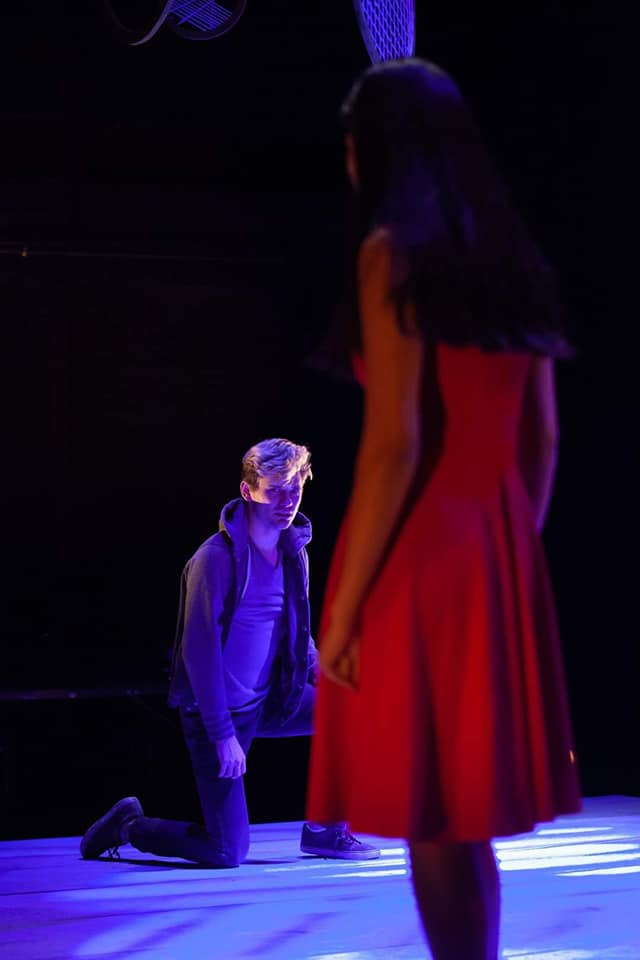
THE MECHANICS
I write all of my short plays in 4 parts: Intro, Rise, Pile-up, Resolution. This is my order of attack:
PILE-UP: Start with a provocative image (aka “pile-up,” “explosion,” “climax”).
Think of things that you rarely get to see on stage. Examples: Something is set on fire; Someone gets shot; Someone jumps off a roof; Someone rips their shirt off.
Make it something that excites you, something that you are energized to write about.
RISE: Now work your way back from the pile-up, step-by-step, to figure out what caused it. In this way, you always know you are working toward an interesting image that excites you. And if it excites you, it will likely excite others.
Keep writing backwards until the play “levels out” to something that feels like exposition (you will be able to feel that the banter has become less “urgent”).
Once you’ve reached this point, you’ve effectively written the “dramatic rise” of your piece. This book by David Ball helped me a great deal when I was first starting out with the short form. He explains why working “backwards” is critical: Backwards & Forwards: A Technical Manual for Reading Plays: David Ball, Michael Langham: 9780809311101: Amazon.com: Books
INTRO: After writing the “dramatic rise,” write the first part of the play. Because this is a ten-minute play (vs. a one-act or longer work), it should start out quickly and establish the premise in a way that is low on word count. It should join up with your middle section fairly seamlessly. It is not uncommon to start ten-minute plays right in the middle of something active. Like…say…two people pointing guns at one another…two people standing on a roof).
RESOLUTION: Now you can write your resolution, which follows the pile-up. It doesn’t have to be a happy ending. It doesn’t even have to feel like an ending. It just needs to get us to a moment of closure. It should feel more earned than convenient (i.e., more connected than “tacked on”). Don’t get us all the way to the ending only to just “phone it in.” Really think about how the ending of the play leaves things with the audience. Are we to understand that life continues on in this way, or that life as we know it is gone? Are we to take away a sense of hope? Are we to be left utterly shocked? Disturbed? The ending matters. Work different angles and run it past some trusted friends and see how it lands. Ultimately, the ending gives us an insight into how you view the world. Is it cynical? Hopeful? Either way, make it personal: what sort of ending is most “on-brand” for you?
ON A MORE PERSONAL NOTE
“No one gives a shit about one-acts,” is a thing someone told me years ago. I can say proudly that at this stage of my career, nearly all of my early short pieces have evolved into full-length plays. I look at them and at how they’re all grown up and I’m proud that I took the time to write down that little snippet of an idea all those years ago. Some of them will never again see the light of day. But some of them are out there for good now, little ambassadors, imparting my singular take on love, joy, grief, and the pain of the world. I’m not for everyone. But some people need to hear my take, some of them even look forward to it. And for them, I’ll keep writing.
Who are you writing for?
PREVIOUS ARTICLES BY AUDREY CEFALY
LEAN MORE ABOUT AUDREY
Visit my website for more about me and the work I do!
QUICK LINKS TO MY PLAYS
Audrey Cefaly's plays (Alabaster, Maytag Virgin, The Gulf, The Last Wide Open, Trouble) have garnered the Lammy Award, the Calicchio Prize, the NNPN Goldman Prize, the Edgerton, and a Pulitzer nomination. Her works have been produced at Signature Theatre, Cincinnati Playhouse, Barter Theatre, Merrimack Rep, Florida Studio, Florida Rep, Gulfshore Playhouse, and countless others. Cefaly is a Dramatist Guild Foundation "Traveling Master," an Arena Stage playwright cohort, and a recipient of the Walter E. Dakin Fellowship from the Sewanee Writers Conference. She is published by Concord Theatricals, Applause Books, Smith & Kraus and TRW.
Thanks for reading How To Playwright!
Subscribe for free to receive new posts and support my work.


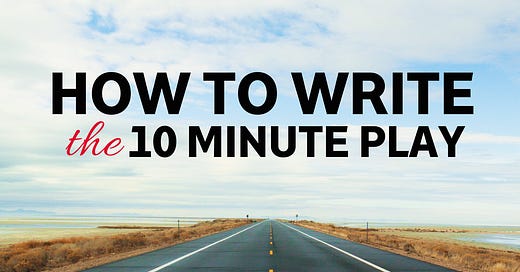


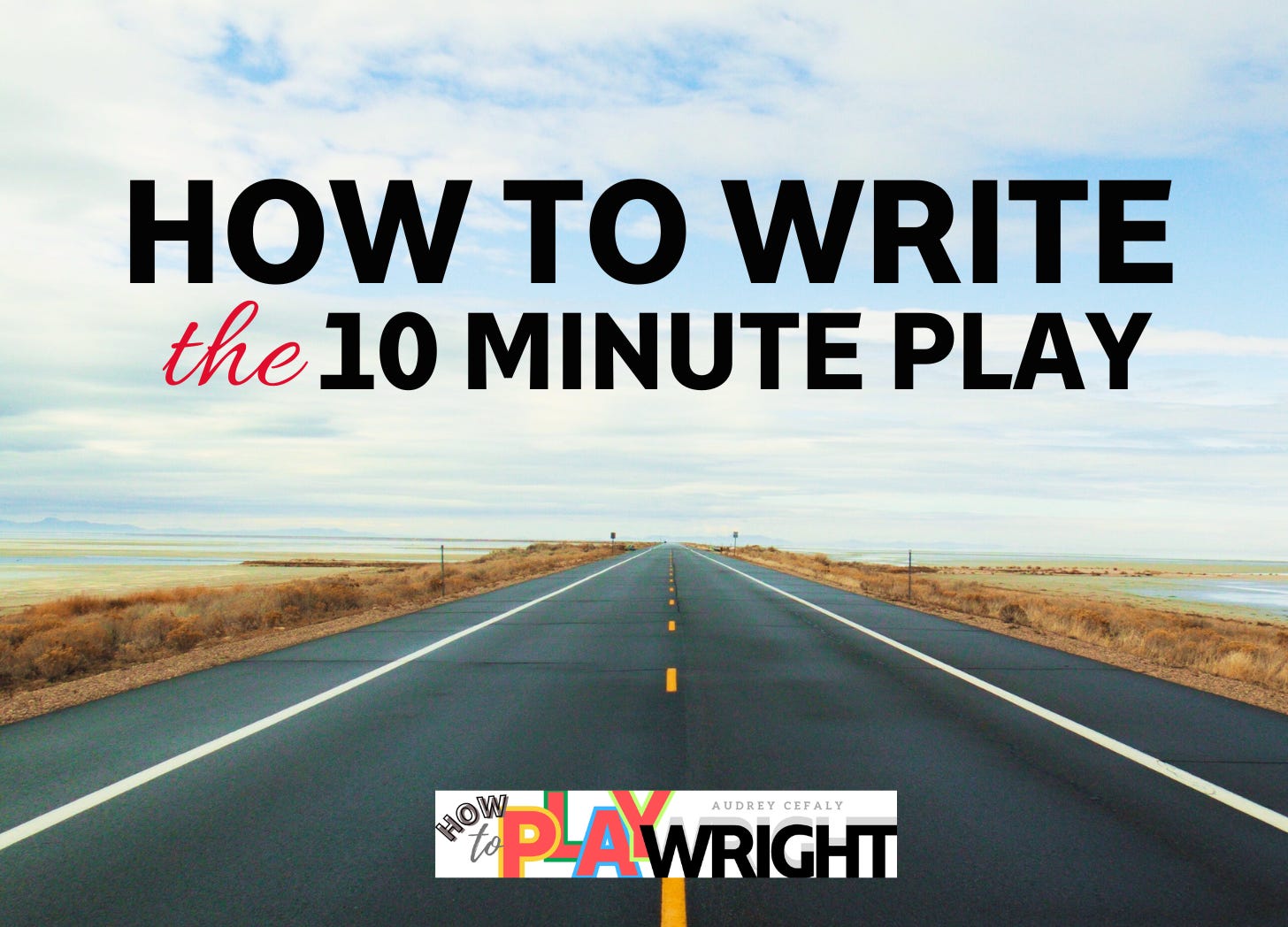

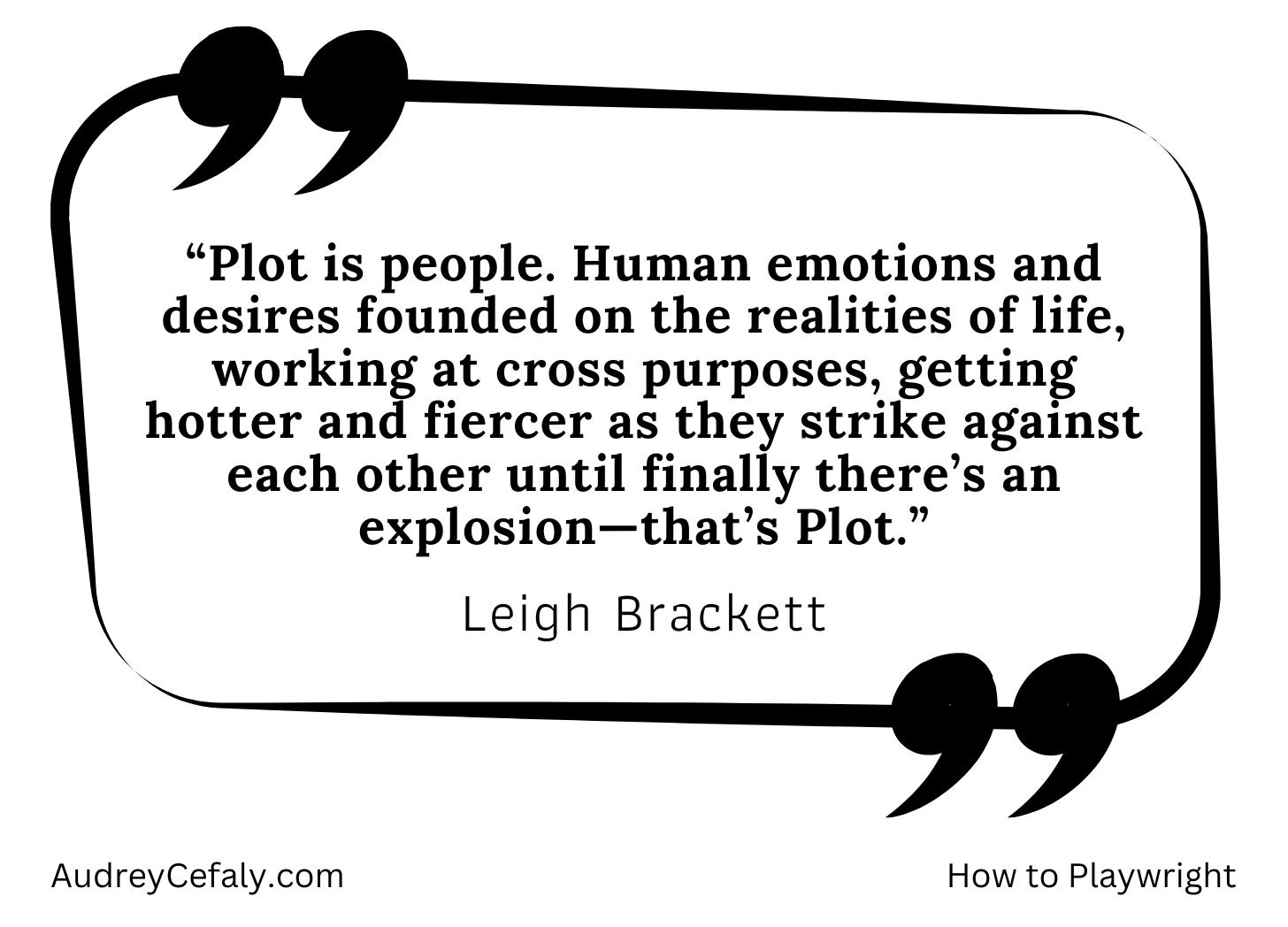
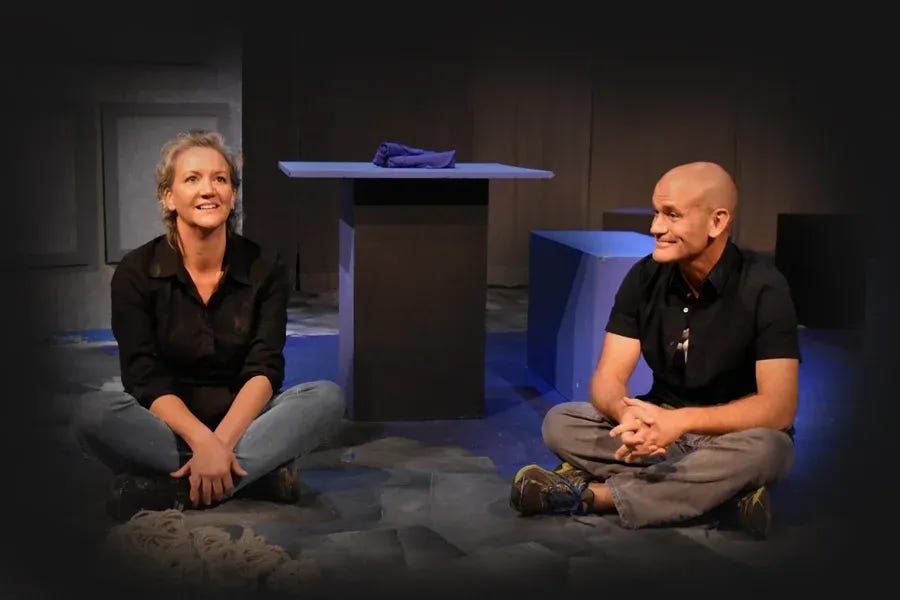









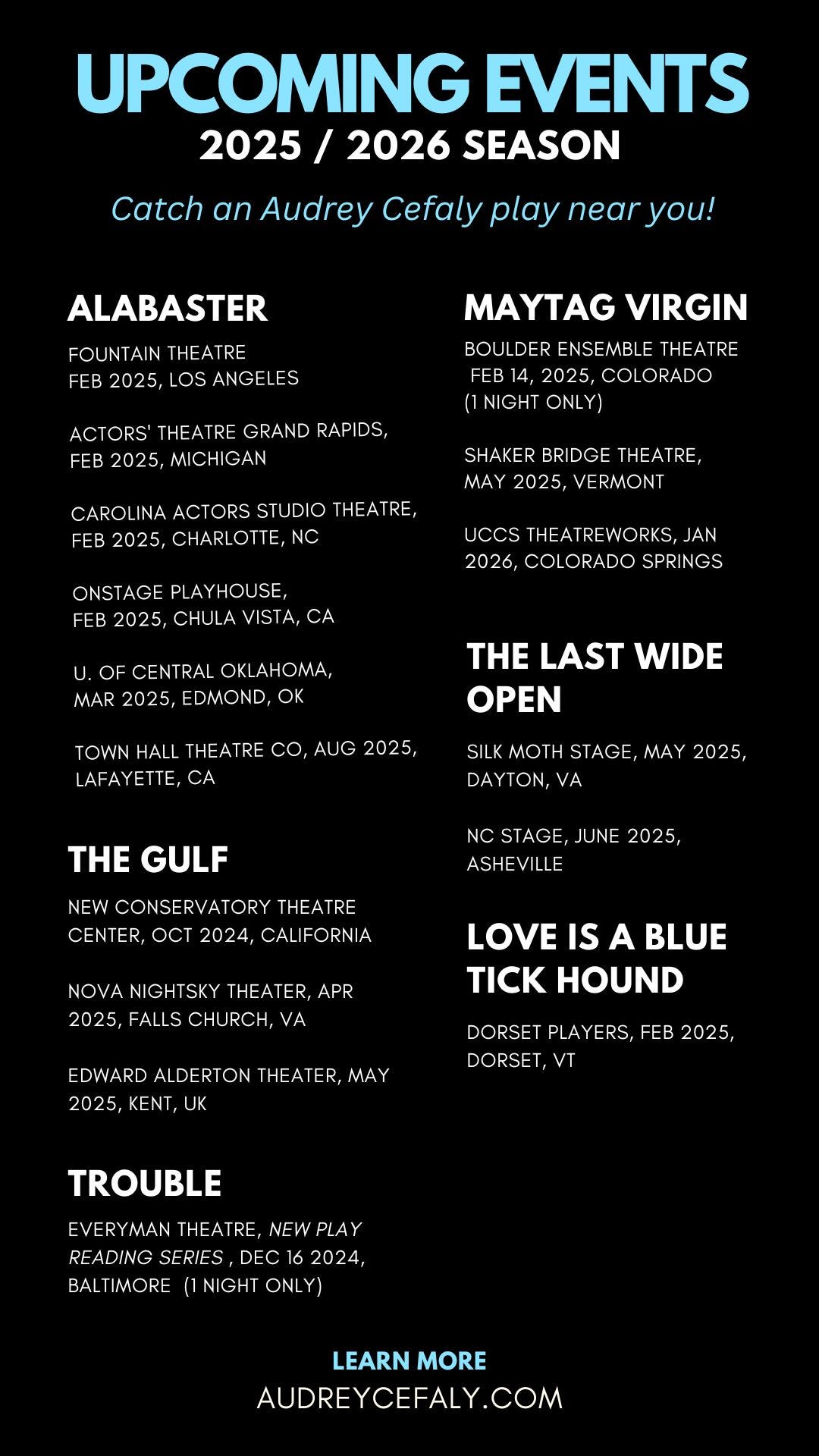
Oh this is so helpful, thank you!
Hi Audrey
I teach a Ten Minute play writing in the local theaters groups here in Inverness, Florida. The basis of the class is what I call the 2-6-2 Rule. The first two pages of the play (taking two minutes) sets up the characters and the dilemma. The next six pages (6 minutes) is the meat of the story, character interaction and how the dilemma is going to be solved. The final two pages is the conclusion when the problem has been solved, as my father used to say…All is Joy.
We keep the characters to no more than five, with minimum stage directions.
We have brought to the stage a selection of these plays for the last three years in a play festival and two sold out holiday shows.